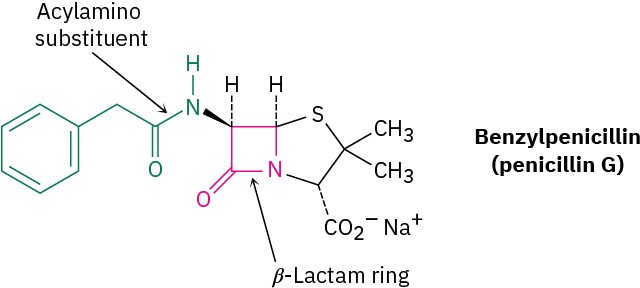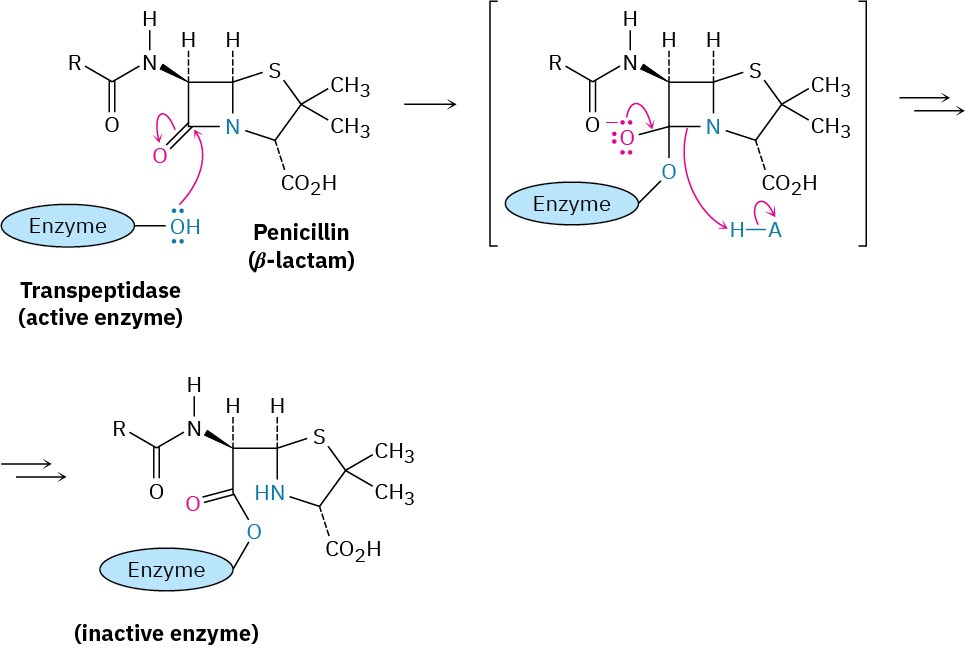Chemistry Matters — β-Lactam Antibiotics
You should never underestimate the value of hard work and logical thinking, but it’s also true that blind luck often plays a role in most real scientific breakthroughs. What has been called “the supreme example of luck in all scientific history” occurred in the late summer of 1928, when the Scottish bacteriologist Alexander Fleming went on vacation, leaving in his lab a culture plate recently inoculated with the bacterium Staphylococcus aureus.
While Fleming was away, an extraordinary chain of events occurred. First, a nine-day cold spell lowered the laboratory temperature to a point where the Staphylococcus in the culture plate could not grow. During this time, spores from a colony of the mold Penicillium notatum, being grown in a lab on the floor below, wafted up into Fleming’s lab and landed in the culture plate. The temperature then rose, and both Staphylococcus and Penicillium began to grow. On returning from vacation, Fleming discarded the plate into a tray of antiseptic, intending to sterilize it. Evidently, though, the plate did not sink deeply enough into the antiseptic, because when Fleming happened to glance at it a few days later, what he saw changed the course of history. He noticed that the growing Penicillium mold appeared to dissolve the colonies of staphylococci.
Fleming realized that the Penicillium mold must be producing a chemical that killed the Staphylococcus bacteria, and he spent several years trying to isolate the substance. Finally, in 1939, the Australian pathologist Howard Florey and the German refugee Ernst Chain managed to isolate the active substance, called penicillin. The dramatic ability of penicillin to cure infections in mice was soon demonstrated, and successful tests in humans followed shortly thereafter. By 1943, penicillin was being produced on a large scale for military use in World War II, and by 1944 it was being used on civilians. Fleming, Florey, and Chain shared the 1945 Nobel Prize in Physiology or Medicine.
Now called benzylpenicillin, or penicillin G, the substance first discovered by Fleming is but one member of a large class of so-called β-lactam antibiotics, compounds with a four- membered lactam (cyclic amide) ring. The four-membered lactam ring is fused to a five- membered, sulfur-containing ring, and the carbon atom next to the lactam carbonyl group is bonded to an acylamino substituent, RCONH–. This acylamino side chain can be varied in the laboratory to provide many hundreds of penicillin analogs with different biological activity profiles. Ampicillin, for instance, has an α-aminophenylacetamido substituent [PhCH(NH2)CONH–].

Closely related to the penicillins are the cephalosporins, a group of β-lactam antibiotics that contain an unsaturated, six-membered, sulfur-containing ring. Cephalexin, marketed under the trade name Keflex, is an example. Cephalosporins generally have much greater antibacterial activity than penicillins, particularly against resistant strains of bacteria.

The biological activity of penicillins and cephalosporins is due to the presence of the strained β-lactam ring, which reacts with and deactivates the transpeptidase enzyme needed to synthesize and repair bacterial cell walls. With the wall either incomplete or weakened, the bacterial cell ruptures and dies.


